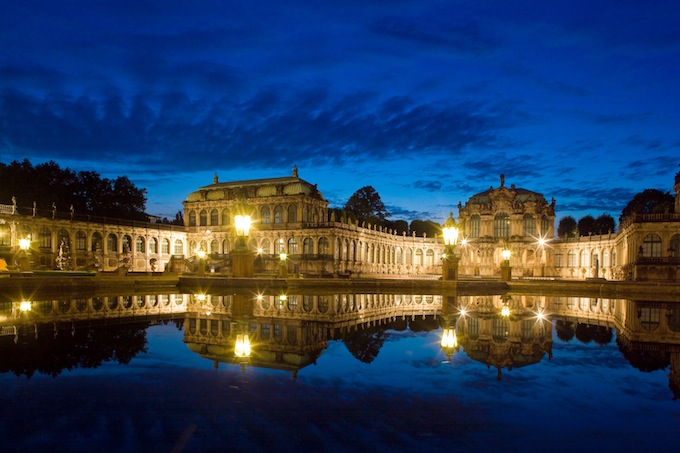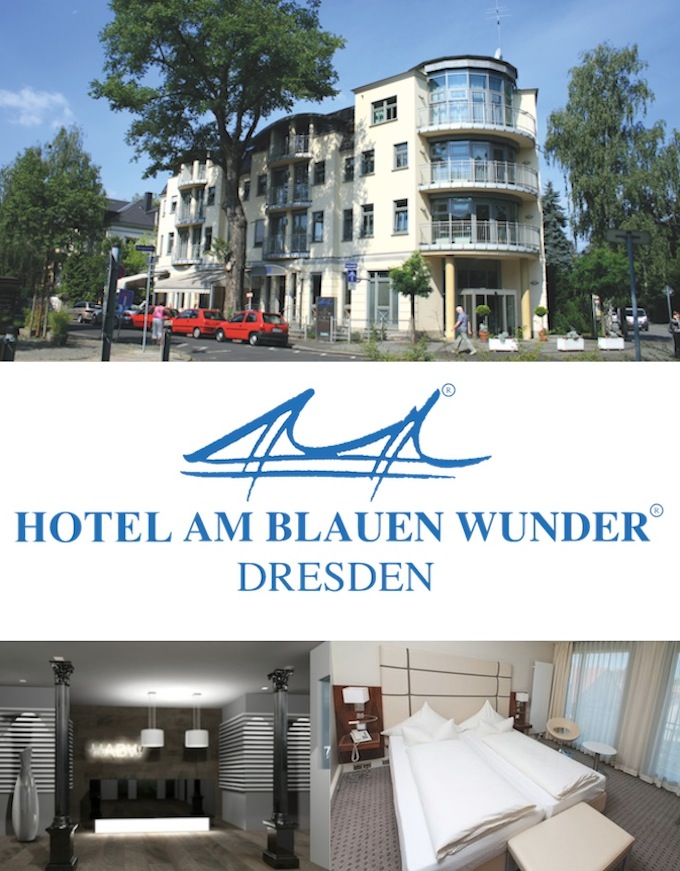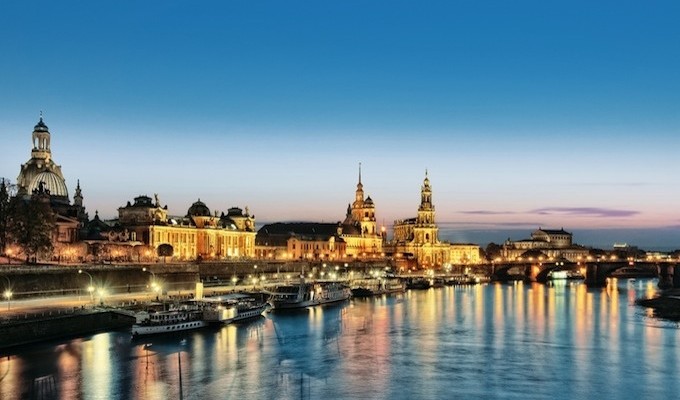Dresden, once upon a time called the ‘Florence of the Elbe’, was rightly considered as one of the most beautiful cities in the world.
The capital of Saxony in the former East Germany, Dresden has a long history as the royal residence of the Kings of Saxony. It lies in the broad basin of the Elbe River between Meissen and Pirna, just 160 km south of Berlin. Sheltering hills north and south of the Elbe valley contribute to the mild climate enjoyed by the city.
Numerous parks and cultural monuments are to be found along the course of the Elbe, most notably a steel bridge – Das Blaue Wunder, a cable railway, a funicular and the world famous town of Meissen. The European porcelain industry originated in Dresden but was moved to nearby Meissen in 1710 – when Johann Böttger introduced porcelain to the European market in 1709, he probably would never have anticipated his factory would still be flourishing after more than 300 years in business!
With a city centre heavily influenced by Baroque and Rococo styles, Dresden was known as a jewel box. King August the Strong gathered many of Europe’s finest architects, musicians, and painters, and his reign marked the beginning of the city’s emergence as a leading European hub for technology and art.
https://youtu.be/7fQG4CcoRuM
Friedrich Schiller, a son of Saxony, wrote his ‘Ode to Joy’ (the literary basis for the European anthem) for the Dresden Masonic Lodge in 1785. Die Bruecke (The Bridge) was a group of German expressionist artists formed in Dresden in 1905, after which the Bruecke Museum in Berlin was named.
During the World War II, however, Dresden was almost completely destroyed by massive bombing by the Anglo-American force. Manufacturing in Dresden expanded greatly after the war, and owing to the paucity of raw materials in the vicinity, the city traditionally eschewed heavy industry in favour of high value-added manufacturing.
Its industries currently produce precision and optical instruments, electrical equipment, specialized chemicals and pharmaceutical products, motor vehicles and airplanes. Microelectronics has grown in significance, and it is also home to Volkswagen’s Transparent Factory, a highly successful blend of the art and science of engineering. Market gardening is extensive, and flowers and shrubs are grown for export. Dresden lies at the centre of an extensive railway system, has an airport, and is connected by the Rivier Elbe with the inland waterway system as far as Hamburg and into the Czech Republic.

The heart of Dresden is still a cluster of Baroque churches, and the Rococo-style Zwinger (pictured above) sits proudly on the south bank of the Elbe, in the old city. The Frauenkirche, Germany’s largest Protestant church, was destroyed; the Hofkirche and the Kreuzkirche were rebuilt shortly after the war. The ruins of the Frauenkirche were kept as a memorial until the 1990s, when reconstruction began; in 2004 it was topped with a cross built by a British silversmith who was a son of one of the pilots who had dropped bombs on the city. Work was completed in 2005, and the Frauenkirche subsequently opened to the public. The Georgenschloss, the former royal palace, is also opened for the public.
Dresden has several major museums and art galleries. The famous Zwinger, which was originally planned as the forecourt for a castle, has been restored and its numerous collections (including pewter and porcelain) and museums (zoology, mineralogy, mathematical and scientific instruments) reopened. The Semper Gallery houses important Renaissance and Baroque paintings by Italian, Dutch, and Flemish masters, including Raphael’s Sistine Madonna. The Japanese Palace, formerly housing a manuscript and map library, has been rebuilt and is now a museum of anthropology and ethnography.
The city has a great operatic tradition, where Carl Maria von Weber and Richard Wagner conducted, and where operas by Richard Strauss and others premiered. The city is home to the Dresden State Theatre and the Dresden Philharmonic Orchestra. There is a music college and colleges of medicine, plastic arts, transport, and teachers’ training, as well as a celebrated Academy of Art.

Highly recommended is the Hotel am Blauen Wunder. With 39 individual rooms and a pretty little bar, it warmly welcomes you to the historic district of Dresden Blasewitz. The spectacular bridge, ‘The Blue Wonder’ (from which the hotel takes its name) spans the Elbe and connects the city districts of Blasewitz and Loschwitz, two affluent residential areas, which were amongst the most expensive in Europe at the turn of the last century.
Restored villas and park-like gardens give Blasewitz a particular and attractive look. Many cozy restaurants and garden cafés mould the atmosphere of this district. There are flower-filled terraces where you can dine on home-made Dresden cuisine, or just enjoy a glass of wine from the region! The nearby city center is easily accessible by public transportation.
Biking and walking are also popular activities, offering a great way to explore the unique landscapes surrounding the city of Dresden. The impressive formations of “Saxon Switzerland” and the Erzgebirge Mountains are just a stone’s throw away. The imposing fortress of Königstein is well worth visiting, towering high above the River Elbe, with amazing views of the valley below.
So, why not treat yourself and experience the joys of Dresden? A charming city filled with romantic ambience, historical sights, museums of world repute, as well as great shopping and an exciting night life. A year-round destination, the first step is to contact our friends in the Hotel am Blauen Wunder! The team there will be only too happy to help you arrange your itinerary whilst in Dresden, like organising visits to Meissen, and so on. If you need help in English or German, please feel free to contact Sabine, she is a friend of Dario Muratore, who runs the hotel, and would be happy to translate!
Flights from Nice to Dresden are available with Lufthansa, Germanwings, and Swiss Air, connecting through Munich or Frankfurt.
![]()
Photographs courtesy Mediaserver Dresden. Lead image © Anja Upmeier, licenced under Creative Commons license; Attribution Non-Commercial (BY-NC); photo of Zwinger © Sylvio Dittrich, licenced under Creative Commons license; Attribution Non-Commercial Share Alike (NC-SA)



Leave a Reply